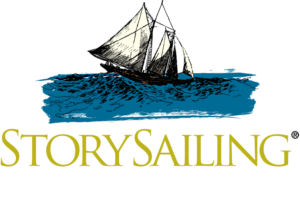 Trademarks are registered for names and logos associated with specific purposes. For example, my StorySailing® name is trademarked and the corresponding logo has a separate trademark. Because I registered a trademark for StorySailing, nobody else can legally use that name—unless they use it for purposes other than professional development and business communication. If someone wanted to set up a business that took people out on a sailboat to tell stories, they would not be infringing on my trademark. However, their logo would have to be different from mine.
Trademarks are registered for names and logos associated with specific purposes. For example, my StorySailing® name is trademarked and the corresponding logo has a separate trademark. Because I registered a trademark for StorySailing, nobody else can legally use that name—unless they use it for purposes other than professional development and business communication. If someone wanted to set up a business that took people out on a sailboat to tell stories, they would not be infringing on my trademark. However, their logo would have to be different from mine.
You can register trademarks for $250 at https://uspto.gov though the process is complex. You’ll have better success working with an intellectual property attorney, despite the additional cost. Use the ™ symbol once you’ve submitted a trademark application and the ® symbol after your application has been approved.
What’s the point? Let’s say you had a speaking business called Ace Keynoters and you created a logo with an ace of hearts playing card and a key. If you don’t trademark those assets, a competitor could register the name and a similar logo and then force you to stop using them. You might eventually win in court, but if the other party could credibly claim that they’d never heard of you and found nothing registered by you in the USPTO trademark database, they’d stand a good chance of keeping the name and mark.
Protect your logos, names, and catch-phrases with a trademark. Prevent them from being stolen or accidentally reinvented by someone else by claiming those ideas first.





